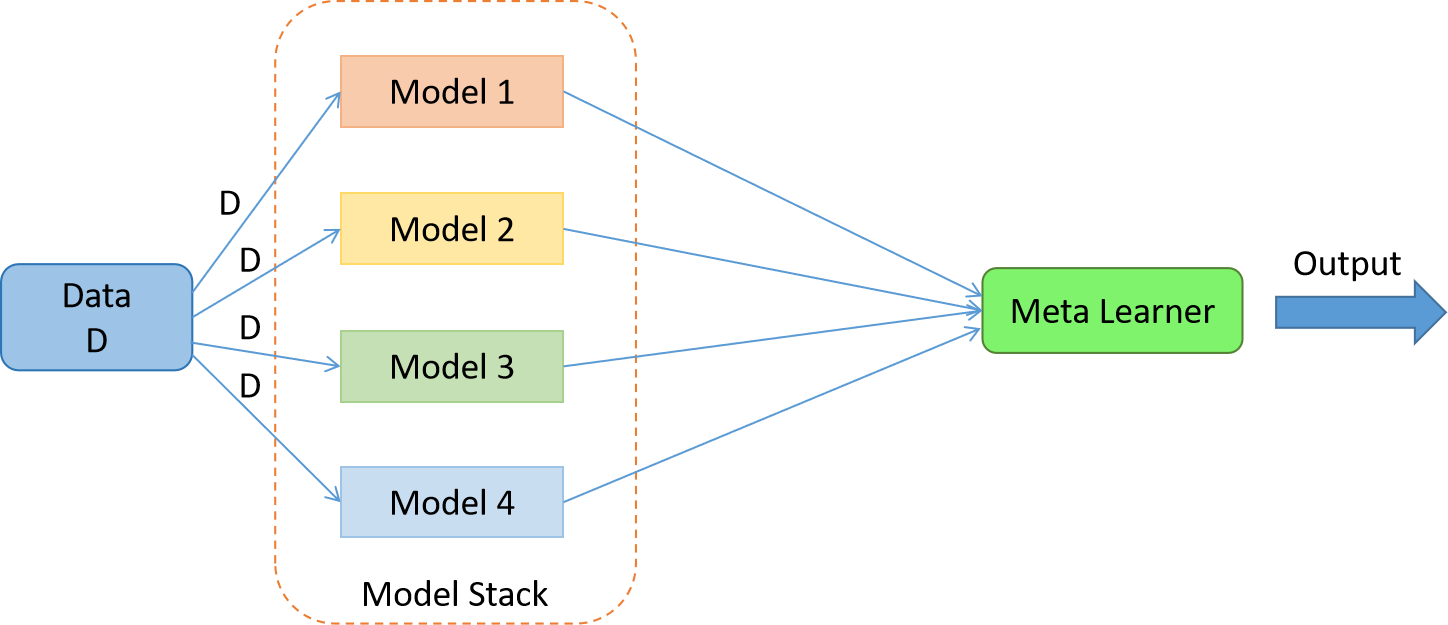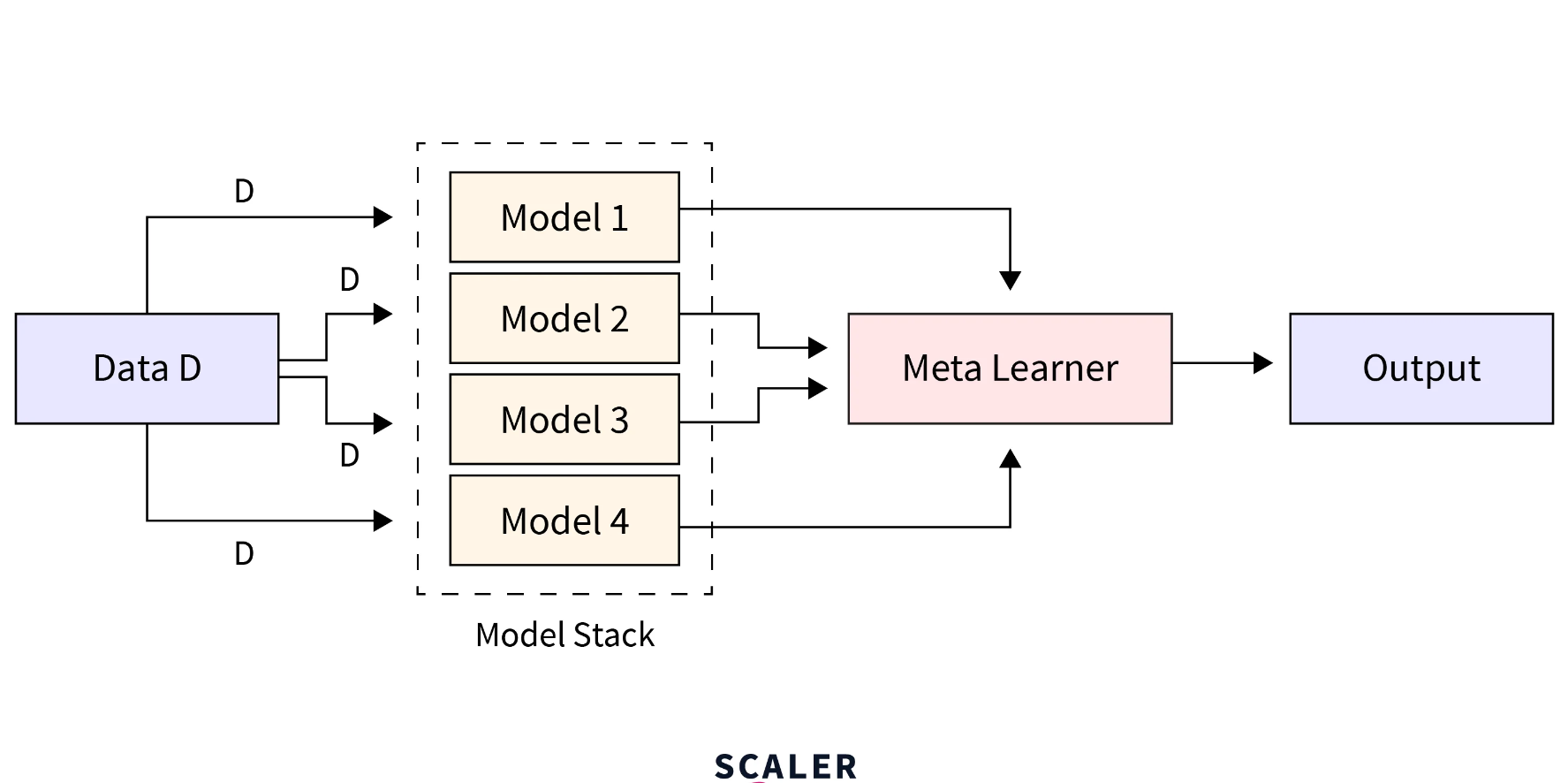Stacking
Aug 14, 2023
Stacking
Stacking, also known as stacked generalization or meta-modeling, is an ensemble learning technique that combines the predictions of multiple base models (learners) through a higher-level model, known as the meta-model or stacking model. Unlike bagging and boosting, which combine predictions through simple averaging or weighted voting, stacking leverages the strengths of various base models by learning how to best combine their predictions to achieve improved performance. Stacking aims to learn a more accurate model by considering the base models' outputs as additional features in the training data.

Stacking Process:
1. Data Preparation: The training dataset is divided into multiple
subsets (folds) for cross-validation. Each fold consists of two parts: the first
part is used to train the base models, and the second part is used to create
predictions that will be fed into the meta-model.
2. Base Model Training: Multiple base models (learners) are trained
on the first part of the training data. These base models can be different types of
algorithms, such as decision trees, support vector machines, or neural networks. The
base models are trained independently.
3. Predictions Generation: After training the base models, they are
used to make predictions on the second part of the training data (the hold-out
fold). These predictions become additional features for the meta-model.
4. Meta-Model Training: The meta-model is trained using the
predictions from the base models as input features along with the original features
of the training data. The meta-model learns how to best combine the base models'
predictions to make the final prediction. This higher-level model can be any
supervised learning algorithm, such as a decision tree, logistic regression, or
neural network.
5. Final Prediction: Once the meta-model is trained, it is used to
make predictions on new, unseen data. The base models' predictions are first
obtained on the new data, and then these predictions are fed into the meta-model to
produce the final prediction.
Types of Stacking:
1. Simple Stacking (Traditional Stacking): In simple stacking, the
base models' predictions are directly used as additional features for training the
meta-model. The meta-model takes the base models' predictions as input and learns
how to combine them to make the final prediction. This approach is straightforward
and effective.
2. Stacking with Out-of-Fold Predictions: To prevent overfitting, a
more advanced stacking technique called "stacking with out-of-fold predictions" is
often used. In this approach, the training dataset is divided into multiple folds,
as mentioned earlier. For each fold, the base models are trained on the other folds
and then used to predict the current fold's data. These out-of-fold predictions are
then combined to form the training dataset for the meta-model. This technique helps
to reduce the risk of overfitting because the meta-model is not trained on the same
data used to create the base models' predictions.
3. Blending: Blending is a simplified version of stacking where
there are only two levels of models: the base models and the meta-model. In
blending, a hold-out validation set is used to create predictions from the base
models, which are then used as input to train the meta-model. The difference between
blending and stacking with out-of-fold predictions is that blending does not involve
multiple folds for cross-validation.
Stacking is a powerful ensemble technique that can lead to improved performance, especially when the base models have complementary strengths and weaknesses. However, it requires careful hyperparameter tuning and regularization to prevent overfitting, especially when using multiple layers of stacking. Additionally, stacking can be computationally expensive due to the need for multiple model training rounds and cross-validation
Interview Questions :
1. How does stacking combine the predictions of multiple models to make a final prediction?
2. What is the role of a meta-model in the stacking process, and how is it trained?
3. Explain the potential benefits of using stacking over individual models or other ensemble techniques.
4. What are some common approaches to selecting the base models for stacking?
Relative Blogs
Aug 14, 2023
Feb 27, 2023
Feb 27, 2023


